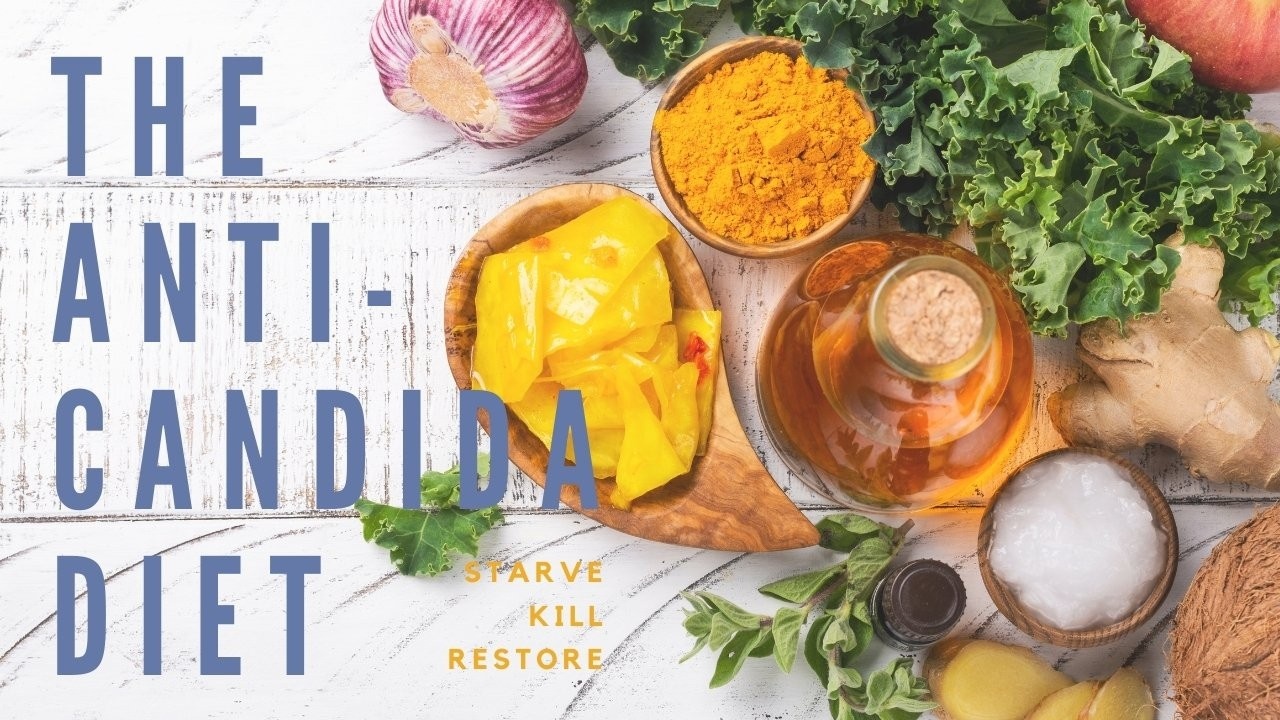
Starve, Kill, Restore - The Goal of the Anti-Candida Diet
Apr 22, 2020Gas, bloating, brain fog, constipation, stomach cramps, diarrhea, nausea, vaginal yeast infections, recurrent UTIs, oral thrush, skin or nail fungal infections, joint pain, low mood, sugar cravings. Whew! That long list can all be symptoms associated with candida overgrowth. And you don’t need to be experiencing all of them to have a candida issue.
What is Candida?
Candida is a naturally occurring yeast found in the GI tract. It aids in the digestion and absorption of nutrients. But when it's overproduced it can lead to candida overgrowth. This creates a biofilm on the intestinal lining that can contribute to the symptoms you’re experiencing.
What Causes Candida to Overgrow?
Candida is kept in balance by the other bacteria in the GI tract. There must be more beneficial bacteria than pathogenic bacteria in the microbiome to have a healthy, happy system. Candida can quickly grow out of control. Candida overgrowth can be fueled by:
-
high carb foods/sugar
-
fermented foods
-
medications/birth control pills
-
excess alcohol
-
chronic stress
-
antibiotics
-
NSAIDs
Detecting a Candida Overgrowth
There are a few different tests that can help determine if candida is the underlying culprit and/or contributing to what you’re experiencing.
-
The Organic Acids Test (OAT) is the gold standard for candida testing. In addition to candida, it also looks at bacteria, mold, vitamin and mineral levels, oxidative stress, neurotransmitter levels, and oxalates.
-
IgG Food Sensitivity Test not only analyzes the antibodies created from foods that may cause inflammation but also takes into consideration if any Candida Albicans are present. When the immune system is upregulated from candida and/or food sensitivities, leaky gut is more likely to occur as well.
-
A Comprehensive Stool Analysis takes a look at the balance of bacteria in the gut (pathogenic and beneficial), yeast, and detects if any parasites are present. It can also indicate if inflammation is present by measuring the level of secretory IgA - the GI tract’s first line of defense in the mucosal lining.
(You can learn more about these testing options here).
Candida Co-Infecions
I often find that candida is not a solo actor. There are usually a few other conditions or issues that are contributors. These other conditions could include conditions like Small Intestine Bacterial Overgrowth (SIBO), mold toxicity, or other microbiome imbalances. Almost all clients with candida have leaky gut. As the immune system is upregulated due to stress on the body from the candida overgrowth, the intestinal lining can become compromised. Leaky gut allows undigested food particles, toxins, and bacteria to leak into the bloodstream which causes the immune system to be upregulated. Stress also takes a big toll on the immune system. Healing the gut is imperative for gaining control of the candida overgrowth!
Candida Cleanse
To support your body and the elimination of candida, a cleanse is recommended to reset and rebalance your gut flora. A candida cleanse includes 3 main steps.
1. Starve
-
Eliminate sugar, alcohol, and fermented foods
-
Minimize starchy carbs and berries to 2 cups a day or less
2. Kill
-
Plant enzymes and herbs are used to break down the biofilm created by the candida
-
A Herxheimer reaction (die-off symptoms) will be experienced as the biofilm is broken down and trapped toxins are released back into the body and the immune system is triggered
-
Yeast also release acetaldehyde (alcohol) as they die off so you may have increased brain fog/feel drunk as candida is killed off
3. Restore
-
Spore-forming probiotics are used to restore the gut microbiome
-
S. Boulardii is a fungal strain that competes for space as candida
Candida Cleanse Nutritional Support
Killing and restoring can be the easiest steps to implement. However, the starve step should not be skipped over! Closely following dietary guidelines is imperative to not fuel the regrowth of candida. Sugar to candida is like throwing gasoline on a fire. Here are the foods to include, avoid, and eat in moderation.
-
Foods to Include:
-
Coconut
-
Garlic
-
ACV
-
Cruciferous Veggies
-
Leafy Greens
-
Ginger
-
Cloves
-
Cinnamon
-
Lemon,
-
Grass-Fed Meat
-
Wild-Caught Seafood
-
Free-Range Poultry and Eggs
-
Non-Starchy Veggies
-
Nuts And Seeds
-
-
Avoid:
-
Gluten
-
Dairy
-
Fermented Foods
-
Alcohol
-
Mushrooms
-
Nutritional Yeast
-
Sugar (in any form)
-
All Fruit Except Berries (see moderation notes)
-
Grains
-
-
Consume in Moderation (2 cups per day or less)
-
Berries
-
Legumes
-
Sweet Potatoes
-
Parsnips
-
Acorn Squash
-
Butternut Squash
-
Spaghetti Squash
-
Carrots
-
Eliminating candida is typically not a fast process. But your patience will pay off when you start feeling the symptoms resolve! Working with a practitioner will help to provide the support and resources you need throughout the process.
The information available on this website is for general health information only and is not intended to be a substitute for professional medical advice, diagnosis or treatment. You should not rely exclusively on information provided on the Website for your health needs. You can read more about our disclaimer here.
Are you overwhelmed by all of the conflicting information regarding health, hormones, nutrition, and weight management?
Join me once a month for a FREE "Ask Me Anything" live zoom sesh! I'll answer all the questions you've been spending so much time searching the internet for.









